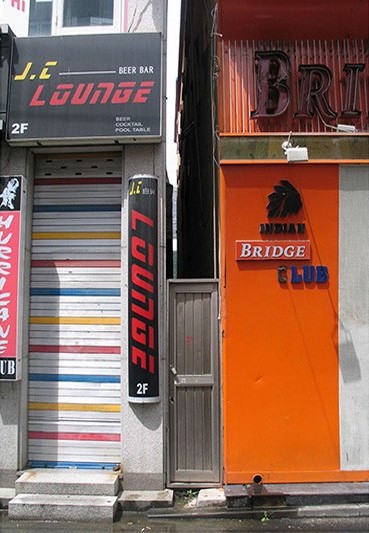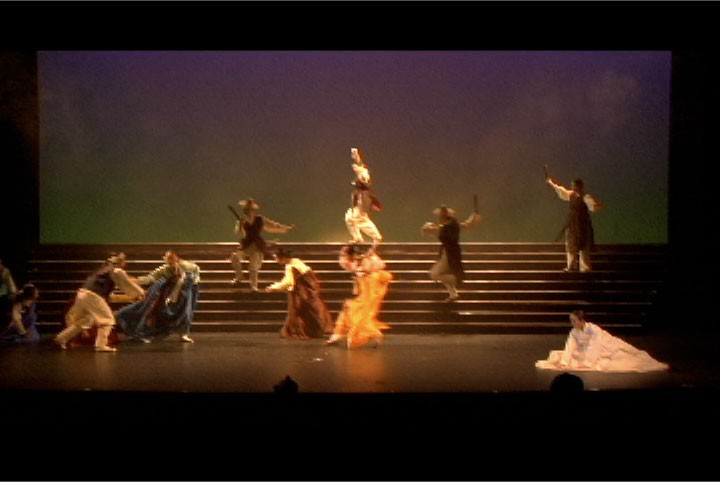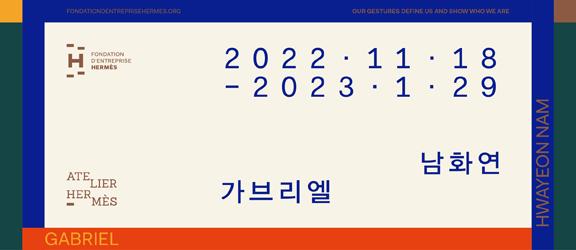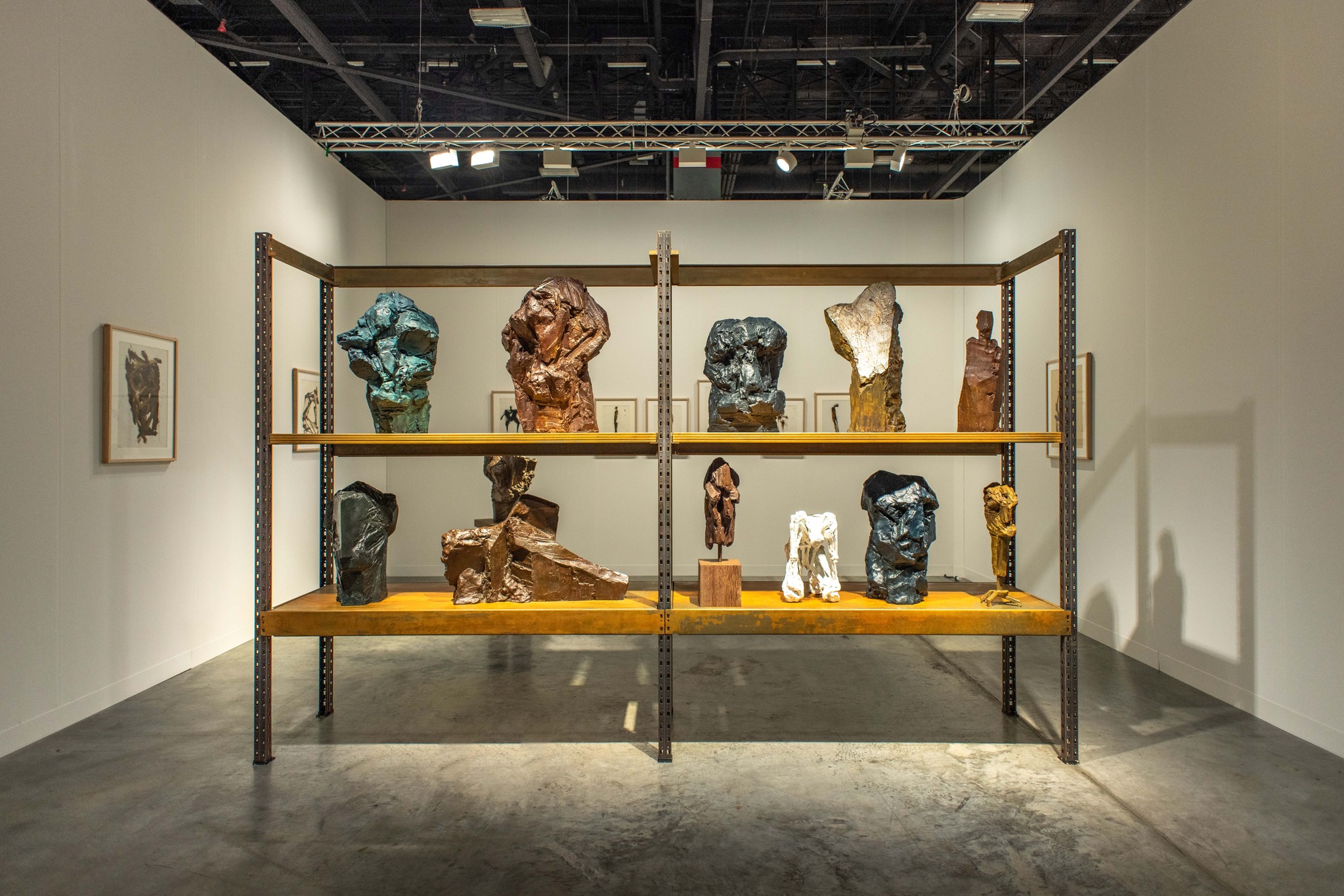siren eun young jung (b. 1974) has been
dedicated to researching marginalized and forgotten histories, reviving them in
the present and repositioning them within the realm of art. Among her notable
projects is an artistic exploration of “Yeoseong Gukgeuk,” a genre of
performance art that gained popularity in the 1950s but faded into obscurity
without securing its place as either traditional or modern theater.
Her body of work seeks to uncover voices of
resistance that challenge the patriarchal and binary frameworks surrounding
gender and sexuality. Through diverse artistic mediums such as video,
performance, and archival practices, she recontextualizes these voices within
contemporary discourse.

siren eun young jung, The Narrow Sorrow poster, 2007 ©siren eun young jung
Before
her renowned Yeoseong Gukgeuk Project, jung had already been
exploring the imagery of marginalized groups in her work. For instance, from
2007 to 2009, she developed the Dongducheon Project, which
documented the buildings of the U.S. military camp town in Dongducheon,
Gyeonggi Province, through photography and sound recordings. This project
sought to bring to light the lives of marginalized individuals who had resided
there but remained invisible to mainstream society.
For
this project, jung conducted in-depth research and field investigations in
Dongducheon, focusing on the lives of various minorities, such as female club
workers and second-generation children from multicultural families. These
individuals, often excluded from official administrative records, lived like
invisible figures, and jung’s work aimed to highlight their existence and
stories.
 siren eun
young jung, The Narrow Sorrow poster, 2007, Installation
view of “A Walk to Remember, A Walk to Envision” (Insa Art Space, 2008) ©siren eun young jung
siren eun
young jung, The Narrow Sorrow poster, 2007, Installation
view of “A Walk to Remember, A Walk to Envision” (Insa Art Space, 2008) ©siren eun young jungAs
a stranger, the artist maintained an appropriate distance from the people of
Dongducheon, observing their small and seemingly insignificant landscapes and
the structures of life these landscapes created from a liminal perspective.
With this approach, she captured photographs of the unusually narrow doors
connecting buildings or clubs in Dongducheon and the women's rooms that lay
beyond them.
Later,
the artist combined these photographs and textual narratives that revealed
their lives into posters. She also recorded sounds from their daily lives and
created a video piece featuring the audio alongside images of Dongducheon's
narrow doors.

siren eun young jung, The Rehearsal, 2009 ©siren eun young jung
Since
2008, the Yeoseong Gukgeuk Project has been an ongoing
artistic endeavor based on research, investigation, and analysis surrounding
Yeoseong Gukgeuk, a Korean performing art exclusively performed by female
actors. For the artist, Yeoseong Gukgeuk serves as a critical ethnographic lens
through which to examine how gender norms and cultural contemporaneity are
recognized and constructed.
Rooted
in Pansori (a traditional Korean musical storytelling genre), Yeoseong Gukgeuk
emerged as a form of Changmu-geuk (singing and dancing theater) in the
aftermath of Korea’s liberation from Japanese colonial rule. It was a genre
pioneered by female performers who resisted the patriarchal violence of the
traditional music world.
During
the 1950s, Yeoseong Gukgeuk gained widespread popularity as a new genre of
popular art. However, it began to decline in the 1960s with the rise of
television and the burgeoning film industry. Despite its significant role in
modern Korean history, Yeoseong Gukgeuk ultimately failed to secure a place
within either traditional or contemporary art, fading from collective memory.
 siren eun
young jung, The Masquerading Moments, 2009 ©DOOSAN Art Center
siren eun
young jung, The Masquerading Moments, 2009 ©DOOSAN Art Centerjung
has collected and studied the scarce archival materials of Yeoseong Gukgeuk,
interviewing the remaining performers to bridge the gaps in its fragmented
history. Based on this historical research, the early works of the Yeoseong
Gukgeuk Project were documentary-style videos capturing rehearsal
scenes and interviews with performers.
In
particular, jung focused on the male character actors of Yeoseong Gukgeuk.
These actors, who performed masculinity both on stage and in their daily lives
for the sake of achieving more authentic portrayals, embodied and practiced new
subjectivities that resisted fixed gender categories. The artist explored the
lives of these male character actors, who disrupted the rigid binary of gender
performance imposed by the modern nation-state and documented their presence
through video.
For
instance, in The Masquerading Moments (2009), jung captured
the act of "masquerading" as performed by Yeoseong Gukgeuk’s actors
to transform themselves into male characters. The video features three elderly
women who were iconic male character performers of their time—Jo Geum-aeng, Cho
Young-sook, and Soja Lee. Filmed in the liminal space of the dressing room,
situated between the stage and everyday life, the work captures the process of
makeup and transformation, revealing the fluid, boundary-blurring moments where
the physicalities of femininity and masculinity coexist.
 siren eun
young jung, The Unexpected Response, 2010 ©siren eun young jung
siren eun
young jung, The Unexpected Response, 2010 ©siren eun young jungThe
artist focuses on the entire "becoming" process leading up to the
stage performance, including makeup and rehearsals. In The Unexpected
Response (2009–2010), she captures rehearsal scenes featuring Lee
Deung-woo, considered the most exceptional Nimai actor in Yeoseong Gukgeuk. A Nimai
is the heroic male protagonist characterized by gallantry, virtue, and a
romantic sensibility. In this work, jung removes all external conditions and
contexts surrounding the actor, concentrating solely on her actions and
performance.
The
artist meticulously documents the actor's refinement of an "ideal
masculinity" through expressions, voice modulation, delicate gestures, and
precise eye movements. By portraying an actor perfecting the performance of
another gender, the work challenges essentialist notions that biological men
are the sole embodiments of masculinity. Instead, it offers an entirely unexpected
response to such preconceptions, illustrating the fluid and constructed nature
of gender.

siren eun young jung, Off/Stage: Soja Lee, 2012 ©siren eun young jung
In
this way, jung uncovers the idea that gender is not fixed but is instead lived,
performed, and revealed through life experiences, as observed in the stages and
lives of Yeoseong Gukgeuk actors. She brings these insights into the present
through various forms of documentation, including video.
In
her Off/Stage (2012) series, jung captures interviews in
which Yeoseong Gukgeuk actors who performed male roles reflect on their pasts.
These actors not only embodied male roles on stage but often maintained their
male personas offstage as well.

Installation view of “Trans-Theatre” (Art Space Pool, 2015) ©siren eun young jung, Art Space Pool
In
her solo exhibition “Trans-Theatre” at Art Space Pool in 2015, siren eun
young jung
presented materials related to Yeoseong Gukgeuk that she had been collecting
since 2008, alongside her own artworks inspired by them. The exhibition,
conceptualized as a kind of Yeoseong Gukgeuk archive, leaned on the discourse
of archival practice while resisting conventional archival methods.
Unlike
typical archive exhibitions, the materials were selectively curated based on
the artist's personal interests and displayed in an unstructured,
non-categorical manner. Regarding the exhibition, jung described it as "an
archival practice of performative gender, which I have tried to embody in my
work thus far."
Her
approach to the archive is performative in nature, inherently open-ended and
never complete. The exhibition space itself serves as a metaphorical theater—a
venue where the ongoing act of collecting and archiving is temporarily staged,
emphasizing process over finality.
 siren eun
young jung, Anomalous Fantasy_Korea Version, 2016 ©Total Museum of Contemproary Art
siren eun
young jung, Anomalous Fantasy_Korea Version, 2016 ©Total Museum of Contemproary ArtMeanwhile, Anomalous Fantasy
(2016), a theater-based work, addresses the "remnants left after the
decline" of Yeoseong Gukgeuk. Directed and written by the artist herself,
the work focuses on the story of Nam Eunjin, the last-generation male character
actor of Yeoseong Gukgeuk.
Anomalous Fantasy
explores the fantasy of the stage through the journey of Nam Eunjin, who was
captivated by Yeoseong Gukgeuk and chose to become an actor. However, for Nam
Eunjin, Yeoseong Gukgeuk existed as a kind of fantasy, given that the genre had
already declined. Alongside the narrative of the last-generation actor, the
work also features G-Voice, an amateur choir composed of gay men, adding the
voices of other marginalized groups who have been denied a rightful place.
 siren eun
young jung, Anomalous Fantasy_Korea Version, 2016 ©Total Museum of Contemproary Art
siren eun
young jung, Anomalous Fantasy_Korea Version, 2016 ©Total Museum of Contemproary ArtThis work brings the anomalies of Yeoseong
Gukgeuk into the present context, creating an opportunity for reinterpretation.
Reflecting on Yeoseong Gukgeuk from a contemporary perspective, it explores how
this genre, which was deliberately omitted and marginalized in the
male-centered modernization, broke down the fixed gender norms imposed by
society. In doing so, it highlights the political possibilities inherent in the
experiences of marginalized groups.
 siren eun
young jung, Deferral Theatre, 2018 ©MMCA
siren eun
young jung, Deferral Theatre, 2018 ©MMCAIn
the 2018 Korea Artist Prize exhibition, Deferral Theatre
also showcases how past traditions are read and performed by future generations
living in the present. The video highlights the final generation of male character
actor in Yeoseong Gukgeuk, Nam Eunjin, the traditional Korean song singer Park
Minhee, and drag king AZANGMAN, while simultaneously interweaving recreated
images and historical materials.
Nam
Eunjin and Park Minhee, who each continue traditions in different genres, offer
distinct perspectives on how to bring disappearing traditional cultures into
the present, raising questions about how we should perceive tradition.
 siren eun
young jung, Deferral Theatre, 2018 ©MMCA
siren eun
young jung, Deferral Theatre, 2018 ©MMCAThe scene again alternates between the male
role actors of Yeoseong Gukgeuk and the drag king AZANGMAN. The male role actors, who have portrayed
a fictional masculinity in Yeoseong Gukgeuk, and the drag king, who performs
and liberates their gender identity on stage, subtly introduce a discussion on
the politics of gender.
What these three performers reveal is not a
grand, historical view of tradition, but rather confessions about their private
lives as they stand on stage and sing. As indicated in the title,
Deferral Theatre by jung doesn't aim to draw a conclusion,
but rather suspends any historical judgment or normative values associated with
Yeoseong Gukgeuk. Through this, the work resists definitive interpretations and
instead reflects on the complexities of gender and identity in performance.
 siren eun
young jung, A Performing by Flash, Afterimage, Velocity, and
Noise, 2019 ©siren eun young jung
siren eun
young jung, A Performing by Flash, Afterimage, Velocity, and
Noise, 2019 ©siren eun young jungIn the following year, at the Korean
Pavilion of the Venice Biennale exhibition “History Has Failed Us, but No
Matter”, jung presented A Performing by Flash, Afterimage, Velocity,
and Noise. This work explores how the performance of Yeoseong Gukgeuk
can evolve and be transformed in contemporary times through queer performance
artists.
The video includes performances by
transgender electronic musician Kirara, lesbian actress Yii Lee, disabled
theater group Dancing Waist's director and actress Seo Ji Won, and drag king AZANGMAN. These performers
challenge traditional genre performances, oscillating between formal subversion
and the awkward, unusual bodily performances rooted in their personal
experiences. Through these actions, jung reintroduces the history of Yeoseong
Gukgeuk within the context of queer performance.
With them, the artist weaves moments of
performance that are sensed as "queering," continuously evoking the
queer turn in artistic practices. At the same time, she questions political
aesthetics through a feminist-queer methodology, aiming to revive the
narratives excluded from public history.
 siren eun
young jung, A Performing by Flash, Afterimage, Velocity, and
Noise, 2019 ©Venice Biennale Korean Pavilion, Arts
Council Korea
siren eun
young jung, A Performing by Flash, Afterimage, Velocity, and
Noise, 2019 ©Venice Biennale Korean Pavilion, Arts
Council KoreaIn this way, siren eun young jung has carried out the Yeoseong Gukgeuk Project as a feminist artistic practice, rewriting the forgotten and de-defined history of Yeoseong Gukgeuk through the movements of the body in performance. Rather than restoring the inherent legitimacy of Yeoseong Gukgeuk, the artist emphasizes the political power of more anomalous and queer artistic practices as a form of sensory transformation.
"I am interested in how the boiling
desires of nameless individuals meet the events of the world, and how they
become resistance, history, and politics."

정은영 작가 ©국립현대미술관
siren eun young jung studied visual arts and feminism at
Ewha Womans University, its graduate school, and the University of Leeds in the
UK. The artist has actively participated in major international events,
including the Asia Pacific Triennale (2015), Gwangju Biennale (2016), Taipei
Biennale (2017), Shanghai Biennale (2018), Performing Arts Meeting in Yokohama TPAM
(2018), Serendipity Art Festival (2018), and the Korean Pavilion at the Venice
Biennale (2019). She has also received prestigious awards, such as the Hermes
Foundation Missulsang in 2013, the Sindoh Art Prize in 2015, and the MMCA’s Korea
Artist Prize in 2018.
References
- 정은영, siren eun young jung (Artist Website)
- 올해의 작가상 2018, 정은영 (Korea Artist Prize 2018, siren eun young jung)
- 한국문화예술위원회, 임국화 - 소외와 침묵의 동두천을 긍정과 소통의 공간으로
- 아트 스페이스 풀, 전환극장 (Art Space Pool, Trans-Theatre)
- 서울문화재단, 잊힌 판타지가 진짜 무대를 만났을 때
- 국립현대미술관, 정은영 | 유예극장 | 2018 (National Museum of Modern and Contemporary Art Korea (MMCA), siren eun young jung | Deferral Theatre | 2018)
- 한국문화예술위원회, 제58회 베니스비엔날레 한국관 귀국전 “역사가 우리를 망쳐 놨지만 그래도 상관없다” (Arts Council Korea, The 58th Venice Biennale Korean Pavilion “History Has Failed Us, but No Matter”




















